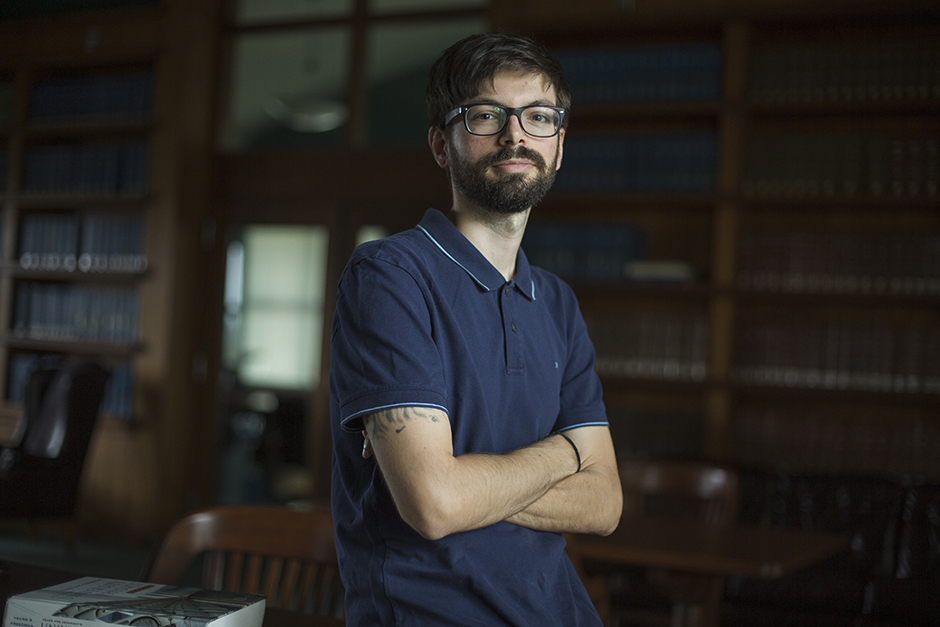His passion for space exploration soon drew him to the mysteries of supermassive black holes, the subject of a groundbreaking study he co-authored about the discovery of a massive black hole that may be responsible for creating stars more than one million light-years away, an unfathomable distance. One light-year is equal to 6 trillion miles.
Published in the most recent issue of the journal Astronomy and Astrophysics, the paper could change the way astrophysicists study black holes and how galaxies and stars are formed. Peca and the researchers he teamed up with in Italy, where he earned his undergraduate and master’s degrees, made the interstellar discovery using NASA's Chandra X-ray Observatory satellite, and other telescopes.
Here Peca shares his passion for space and what he loves most about black holes, which are known to absorb and rip everything, from light to stars apart, with A&S News.
Were you surprised to discover this massive black hole?
I was totally amazed by the discovery, and still am! I consider myself an "astrophysics rookie," but from the first calculations and the first analysis, it was clear from the beginning that we had discovered something very interesting. The "positive feedback" we found was something I had heard about only in theory, never as a real observation. It is about the stimulation of star formation in galaxies by an active supermassive black hole located billions and billions of miles away. It sounds like science fiction.
What excites you the most about studying the cosmos and black holes?
Since I was a child, every time I looked up at the night sky, I was spellbound. We are a tiny dot inside an infinite universe that is made up of galaxies and black holes with unbelievable power. It is estimated that we know about only 5 percent of the entire universe, and the idea of giving a little contribution to understanding the remaining 95 percent is very exciting for me.
What most captivates you about black holes?
The most exciting thing about black holes is that we don't know what they are made of. In the world of astrophysics, not understanding something is a challenge, but this quest to understand the unknown always keeps my interest in space and black holes alive.
What’s your next big project?
Now I am working with University of Miami Assistant Professor Nico Cappelluti on Stripe82, which is a very large field of the celestial sky where I am conducting X-ray analysis. Stripe82 is a large project involving institutions from around the world, including Yale University, University of Hawaii, University of Maryland, Baltimore County, Max Planck Institute for Astronomy in Germany, and many others. Our goal is to identify and study the most powerful, hidden, and distant active supermassive black holes in the universe. I am very excited to be a part of this project and working with a team of world experts; it’s very ambitious!

